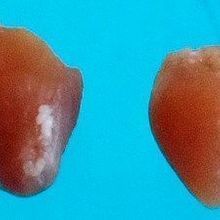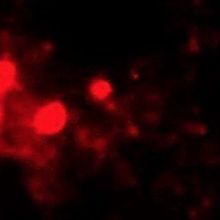Login
Subscribeextracellular matrix

Glycogen Metabolism May Play a Key Role in Pulmonary Fibrosis
Charlene Lancaster, PhD | Sep 11, 2023 | 4 min read
Researchers discover that glycogen and N-linked glycans accumulate in fibrotic regions of the lung and may be important for therapy development.

Turning Organoids Inside Out
The Scientist’s Creative Services Team, MilliporeSigma, and Hub Organoids | Aug 15, 2023 | 4 min read
Discover how a new procedure reverses the polarity of typical basolateral-out organoids to form versatile apical-out organoids.

The Basics of the Tumor Microenvironment
Johanna Pruller, PhD | Jun 15, 2023 | 4 min read
Learn about the tumor microenvironment (TME), a key influencer of cancer growth, spread, and treatment success.

A New Model with Fully Functioning Blood Vessels Mimics Brain Cancer
Roni Dengler, PhD | Sep 10, 2021 | 2 min read
A newly developed platform may one day replace cell culture and animal models to personalize cancer treatment.

A Better Hydrogel for 3D Cell Culture
The Scientist Creative Services Team in collaboration with MilliporeSigma | May 13, 2021 | 2 min read
Drug screening in 3D cell cultures is possible with the right tools.

Technique Talk: High-Throughput Drug Screening Using 3D Cell Culture
The Scientist Creative Services Team in collaboration with MilliporeSigma | May 5, 2021 | 1 min read
In this workshop, learn how to use hydrogel 3D cell culture plates for streamlined 3D cell culture colony formation, imaging, metabolic read-out, and T cell-mediated tumor cell killing.

Promoting Stem Cell Growth and Self-Renewal In Vitro
The Scientist Creative Services Team in collaboration with MilliporeSigma | Feb 19, 2021 | 2 min read
An engineered laminin substrate facilitates high-quality human stem cell cultures.

Exploring the Matrix: A Profile of Zena Werb
Diana Kwon | Dec 1, 2019 | 7 min read
The cell and molecular biologist unveiled a role for the breakdown of proteins in the extracellular matrix in both healthy and pathogenic cells.

Image of the Day: Actin Assembly
Emily Makowski | Sep 17, 2019 | 1 min read
Microtubules need actin to disassemble focal adhesions, allowing for cell movement.

Study Explains How Newborn Mice Can Regrow Damaged Hearts
Ruth Williams | May 2, 2018 | 4 min read
The extracellular matrix appears to inhibit regeneration; but scientists debate whether heart muscle really comes back.

Image of the Day: Reunited and It Feels So Good
The Scientist Staff | Jul 28, 2017 | 1 min read
Zebrafish have a remarkable ability to heal their damaged nerve fibers following a spinal injury.

Location, Location, Location
Anna Azvolinsky | Apr 1, 2017 | 9 min read
Since first proposing that a cell’s function and biology depend on its surroundings, Mina Bissell continues to probe the role of the extracellular matrix.

“Ghost Fibers” Help Heal Muscle Injury
Karen Zusi | Dec 15, 2015 | 1 min read
Injured muscle cells leave behind organized collagen fibers that act as scaffolding for new tissue growth.

Brain Freeze
Kerry Grens | Oct 1, 2015 | 2 min read
A common tissue fixation method distorts the true neuronal landscape.

The Science of Stretch
Helene M. Langevin | May 1, 2013 | 10 min read
The study of connective tissue is shedding light on pain and providing new explanations for alternative medicine.

Pointed Science
Helene M. Langevin | Apr 30, 2013 | 1 min read
University of Vermont neurologist Helene Langevin explains some emerging research attempting to explain the benefits of acupuncture.

The Science of Acupuncture
Helene M. Langevin | Apr 30, 2013 | 1 min read
Research is uncovering connective tissue's role in the benefits of the ancient practice.
(Re)Programming Director
Karen Hopkin | Oct 1, 2012 | 9 min read
Unwilling to accept the finality of terminal differentiation, Helen Blau has honed techniques that showcase the flexibility of cells to adopt different identities.
